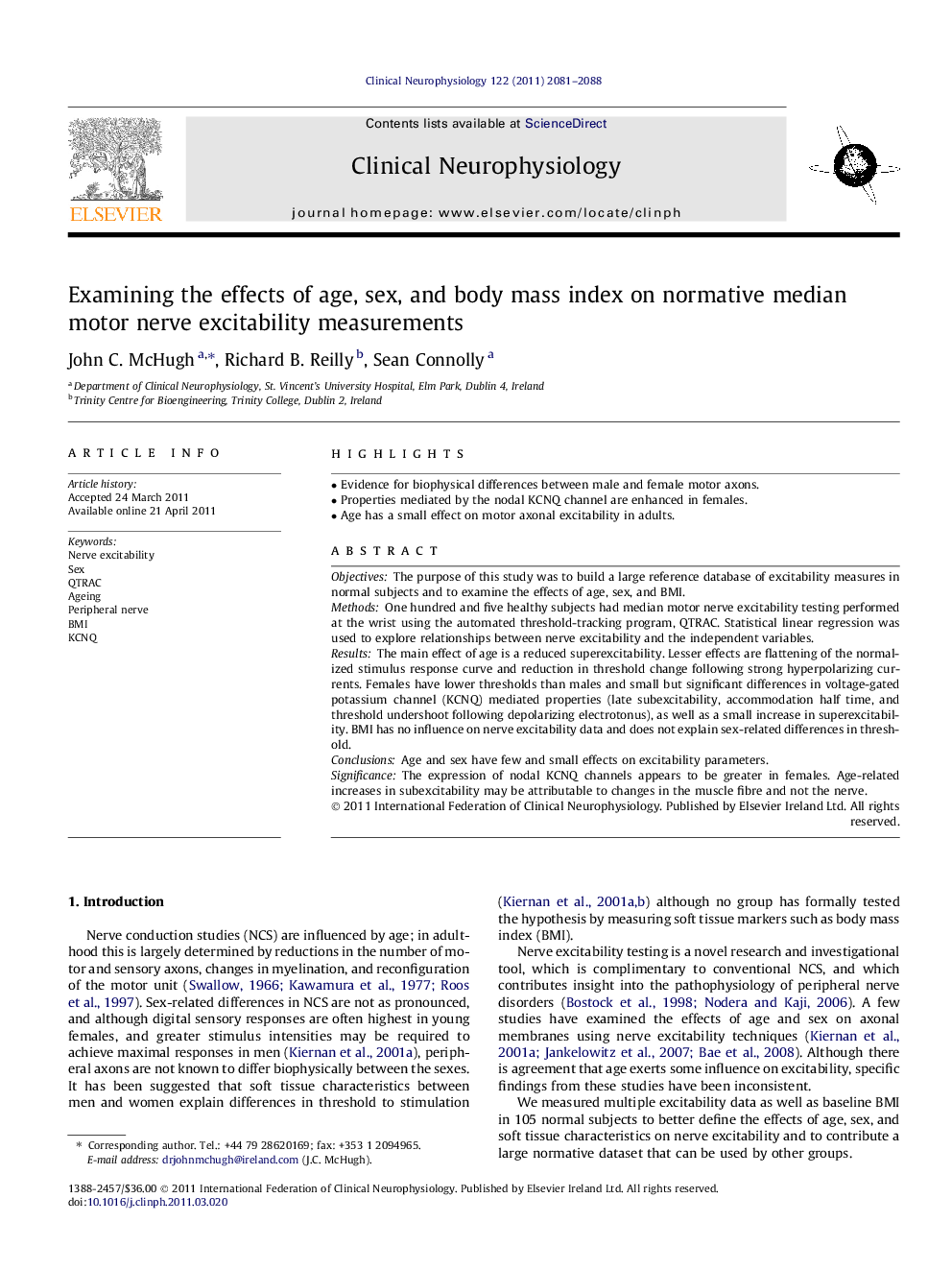| Article ID | Journal | Published Year | Pages | File Type |
|---|---|---|---|---|
| 3045731 | Clinical Neurophysiology | 2011 | 8 Pages |
ObjectivesThe purpose of this study was to build a large reference database of excitability measures in normal subjects and to examine the effects of age, sex, and BMI.MethodsOne hundred and five healthy subjects had median motor nerve excitability testing performed at the wrist using the automated threshold-tracking program, QTRAC. Statistical linear regression was used to explore relationships between nerve excitability and the independent variables.ResultsThe main effect of age is a reduced superexcitability. Lesser effects are flattening of the normalized stimulus response curve and reduction in threshold change following strong hyperpolarizing currents. Females have lower thresholds than males and small but significant differences in voltage-gated potassium channel (KCNQ) mediated properties (late subexcitability, accommodation half time, and threshold undershoot following depolarizing electrotonus), as well as a small increase in superexcitability. BMI has no influence on nerve excitability data and does not explain sex-related differences in threshold.ConclusionsAge and sex have few and small effects on excitability parameters.SignificanceThe expression of nodal KCNQ channels appears to be greater in females. Age-related increases in subexcitability may be attributable to changes in the muscle fibre and not the nerve.
► Evidence for biophysical differences between male and female motor axons. ► Properties mediated by the nodal KCNQ channel are enhanced in females. ► Age has a small effect on motor axonal excitability in adults.
